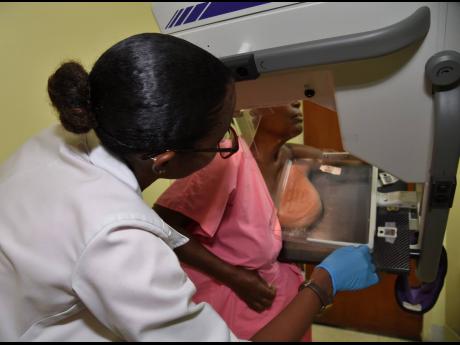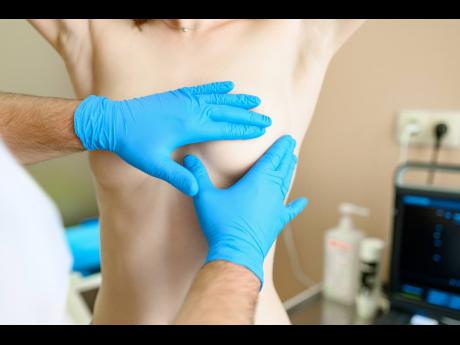Get screened, get treated
Local healthcare advocates are encouraging more persons to access screening for breast cancer, given the range of factors which put persons at risk for the condition, and the availability of various facilities for early detection and treatment.
According to Dr Cathi-Ann Williams, NCD risk factor programme development officer, Non-Communicable Disease and Injury Prevention Unit in the Ministry of Health and Wellness (MOHW), breast cancer is “a major public health challenge and represents a public health priority in Jamaica”. The situation, she says, has prompted the MOHW’s continued emphasis on the importance of “breast education and screening among the Jamaican population”.
“In Jamaica, breast cancer is the leading cause of cancer-related morbidity and mortality in women. The Global Cancer Observatory reports that in Jamaica in 2020, there were an estimated 1,208 new cases of breast cancer, with an estimated 637 breast cancer deaths,” Dr Williams said.
It is estimated that one in 21 Jamaican women will be diagnosed with breast cancer.
Dr Williams says mammography screening is currently considered the most effective way of reducing breast cancer mortality and increasing the odds of survival.
“For women at average risk, screening mammograms should be performed annually, beginning at age 40, to check the breasts for any early signs of breast cancer. If you have a higher risk of breast cancer, your doctor will monitor you closely and may opt to do investigations for breast cancer at a younger age than 40 years, as indicated.”
She said that breast cancers in women age 40 to 49 tend to grow faster than breast cancers in older women, which means that mammography and early detection are essential in these women for the chances of survival to be highest.
“Screening offers a woman, if she develops breast cancer, the opportunity to treat that cancer early, when the treatment can be less aggressive,” Dr Williams said.
Researchers note that breast cancer symptoms vary widely, and many breast cancers have no obvious symptoms at all. Symptoms may, however, include: new lump in the breast or underarm (armpit), thickening or swelling of part of the breast, irritation or dimpling of breast skin, redness or flaky skin in the nipple area or the breast.
Pulling in of the nipple or pain in the nipple area, nipple discharge other than breast milk, including blood, any change in the size or the shape of the breast, and pain in any area of the breast may also be symptoms of breast cancer.
She notes, however, that some of these symptoms can happen with other conditions that are not cancer, and advises that where there are any signs or symptoms of concern, persons should visit a doctor immediately.
Dr Williams notes that common risk factors for developing breast cancer include age, family history of breast cancer, prior diagnosis of breast cancer, chest radiation or genetic mutations, and that most breast cancers are found in women who are 50 years old or older.
Michael Leslie, acting executive director of the Jamaica Cancer Society, asserts that the organisation has been the “beacon of hope” to the numerous women who access mammography screening at its head office at 16 Lady Musgrave Road. He urged women to fully utilise the service.
“A mammogram is the gold standard in breast cancer screening, which allows for early detection of breast cancer. A mammogram can detect a lump as small as the head of a common pin. Women with a strong family history of breast cancer should see their physicians, because they would need to start screening earlier than age 40. It is important to note that approximately 80 per cent of breast cancer cases are diagnosed in persons whose family has no history of the disease. We encourage young women to do their breast self-examinations after their last period, and should also do a clinical breast examination twice per year by a doctor or a nurse,” Leslie added.
Mammography screening is available at the following locationss: University Hospital of the West Indies Mammography Unit; Danhope Radiology; The Woman’s Place; KRIS; Precision Imaging Centre; X-ray and Diagnostics Ultrasound Consultants; Island Radiology, located in Ocho Rios and Mandeville; Mandeville Radiology; Radiology West, and Hospiten in Montego Bay; and Black River Radiology.
Persons may also visit the MOHW’s Non-Communicable Disease and Injury Prevention webpage, at ncdip.moh.gov.jm.
October is Breast Cancer Awareness Month, an annual campaign to raise consciousness about the impact of breast cancer.



